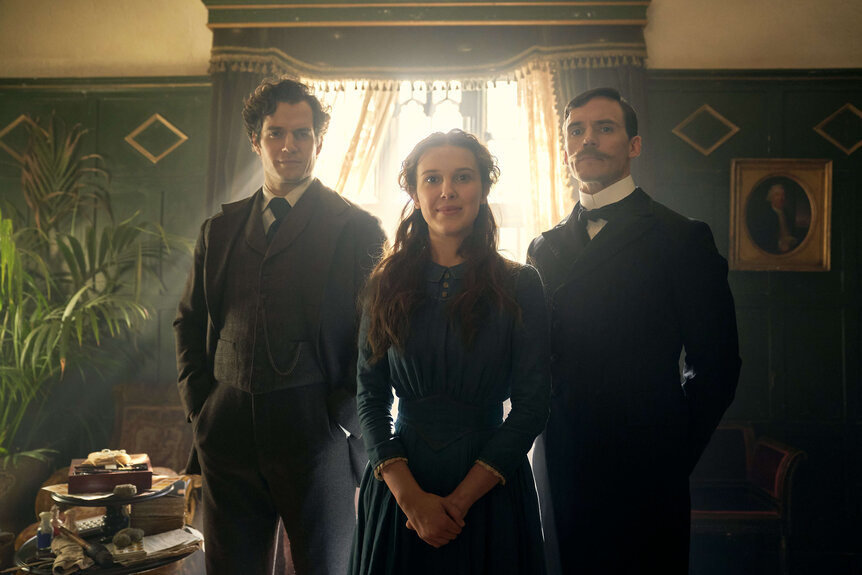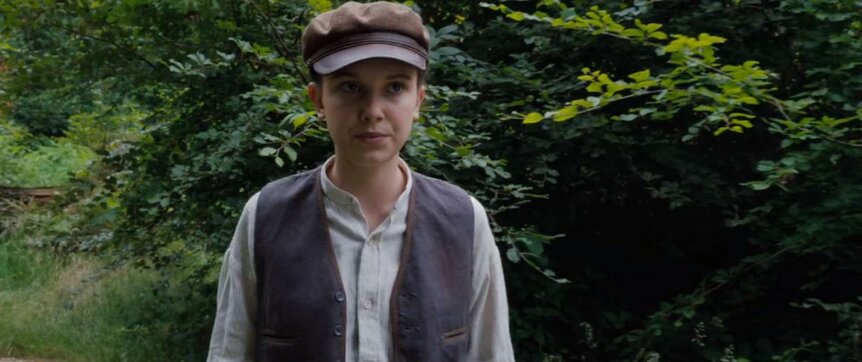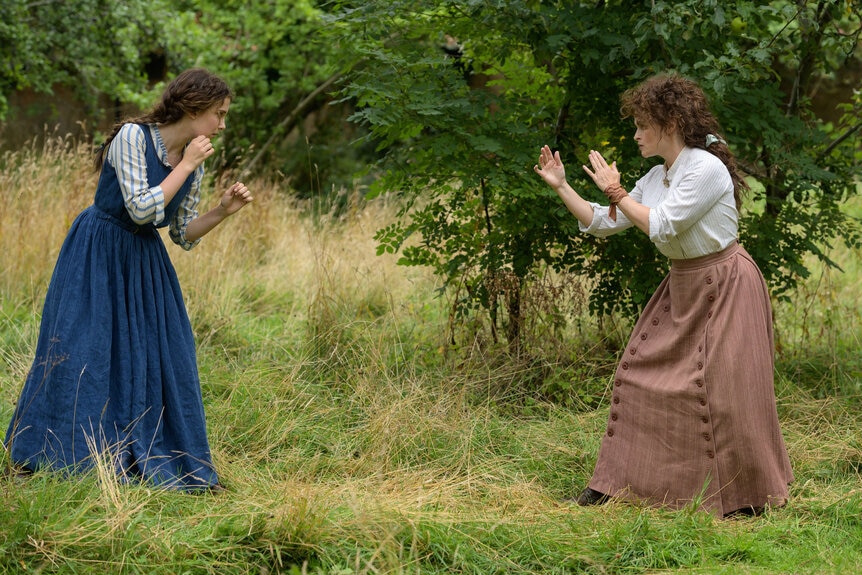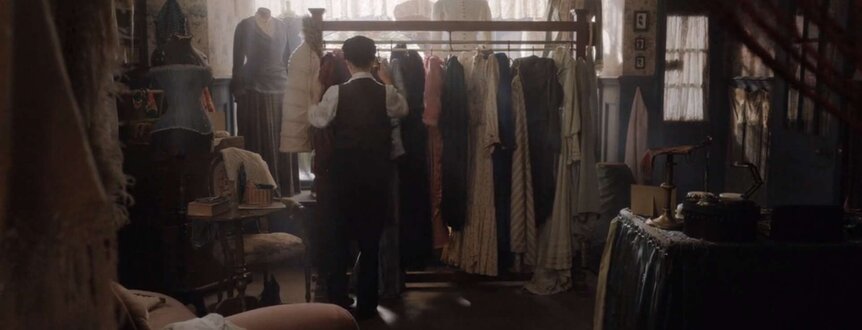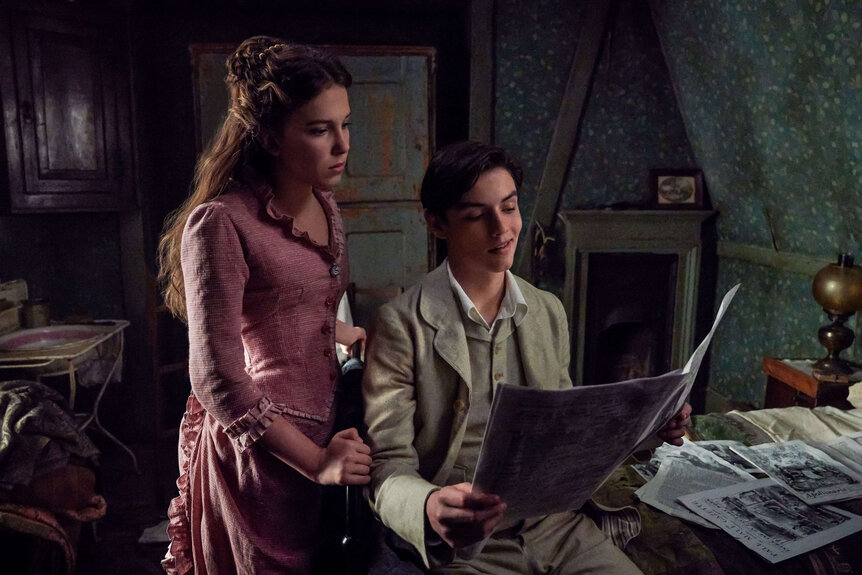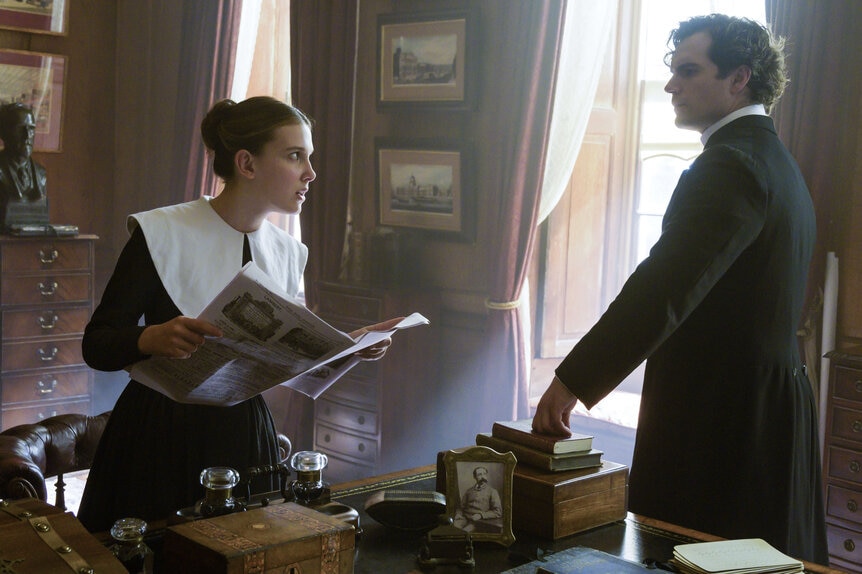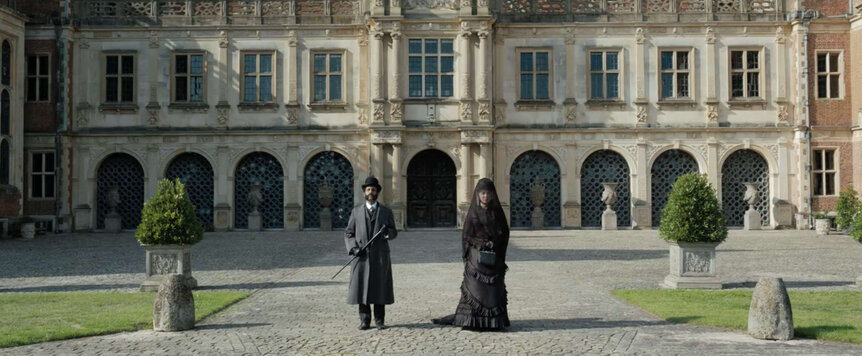Create a free profile to get unlimited access to exclusive videos, sweepstakes, and more!
Look of the Week: The adaptable fighting style of Enola Holmes
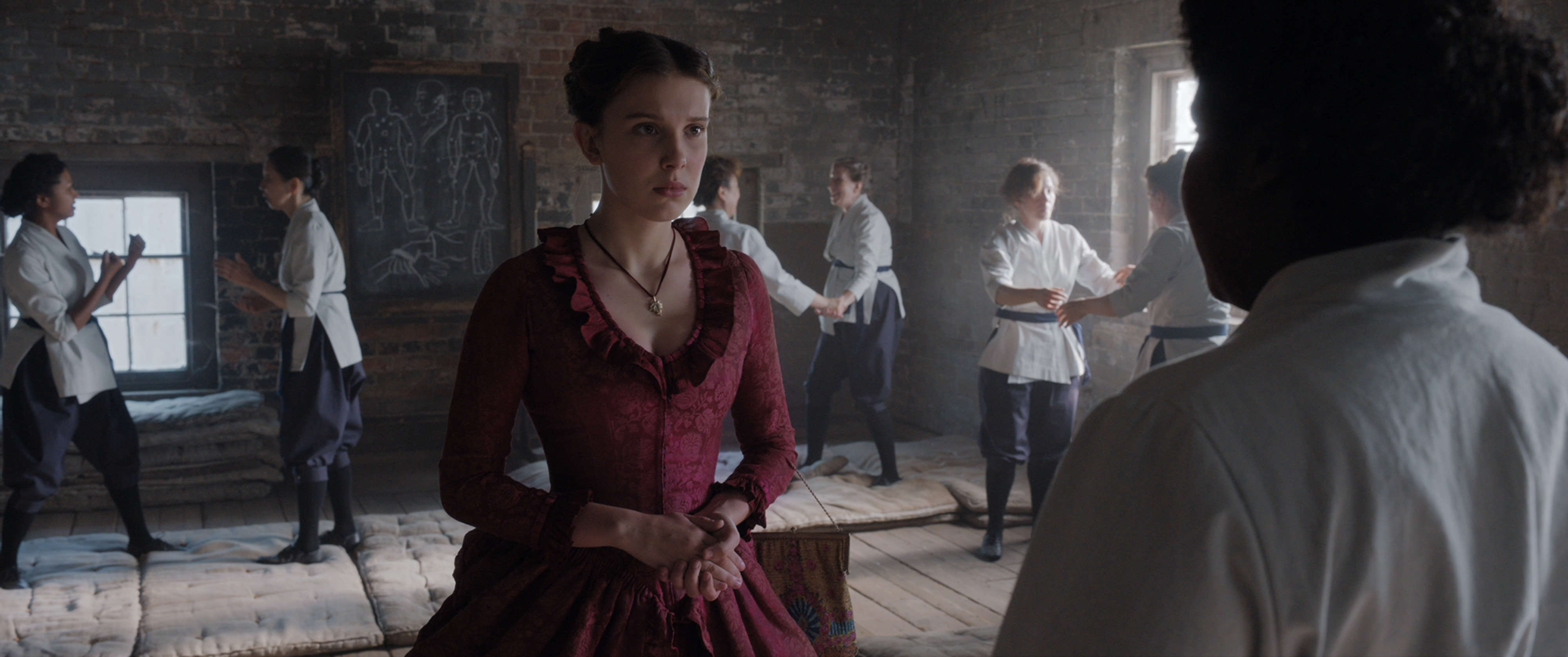
Welcome back to Look of the Week, celebrating the best in TV and film sartorial excellence, past and present across sci-fi, horror, fantasy, and other genre classics!
From Basil Rathbone's faithful deerstalker to Benedict Cumberbatch's covetable Belstaff "Milford" coat, Arthur Conan Doyle's legendary Sherlock Holmes has always scored highly in the sartorial stakes. The same is true for Henry Cavill, who plays the iconic detective in Netflix's Enola Holmes, which sees him opt for a dapper look.
However, this movie isn't named after the world-famous sleuth, so Cavill and his disarming curls will have to take a backseat to the titular 16-year-old heroine, Enola (Millie Bobby Brown). Sherlock's younger sister wields clothing like a weapon and a form of protection in a world that is as restrictive as a corset. She knows what outfit to wear, and whether to allude, stand out, or disarm, proving how valuable one's appearance is when the game is afoot. Oscar-nominated costume designer Consolata Boyle proves that 19th-century fashion can be fought in when the occasion arises — which for Enola is with some frequency.
Light spoilers for Enola Holmes ahead.
"Enola was raised to wear what she wants," Millie Bobby Brown explains in the Meet Enola featurette, which is evident from her lack of regard for glove and hat etiquette when she meets her brothers at the train station. Set in 1884 at a time when feminism was beginning to take shape, the rules of what ladies should and shouldn't wear are pretty rigid — not for Enola, who was raised outside of the restrictive Victorian society guidelines.
The headwear factor will soon change, but her penchant for Breton-style caps has nothing to do with becoming the lady that Mycroft (Sam Claflin) so desperately wants her to embrace. Rather, she dresses in Sherlock's old boyhood threads to escape the binds of this particular future.
Unlike other teenagers from a respectable family, Enola has so far escaped the clutches of an oppressive society. Her mother has educated her in the important areas of literature, ciphers, science, and sport, choosing to teach her combat skills while wearing a dress. Her favored at-home style is an ensemble that at a quick glance looks like a contemporary denim number worn with a striped shirt underneath. With a few adjustments, this outfit would be Madewell-ready.
While the corset has not been part of her closet, the layers of bloomers and petticoats still make up her daily attire. This all changes when her mother up and leaves without so much as a word beyond the coded message that reveals a hidden stash of cash (valuable funds that will ensure Enola can keep one step ahead of Sherlock and Mycroft during a shopping spree).
Defying Mycroft's wish to "break her" by sending her to finishing school, Enola flees to London where she embraces the look she is actively been trying to avoid. Brandishing clothing as a tool in her arsenal, Enola might not have been a part of this society but she knows how to use the trappings of Victorian England to her advantage.
When she is mistaken for a boy with no money, the fists full of money at her disposal lead to a classic makeover scenario. Brown is no stranger to the power of clothing, with her Stranger Things character going on quite the costume journey that culminates in a desire to find her own identity in Season 3. A mall makeover montage set to Madonna underscored the importance of friendship and Enola Holmes is using this familiar concept to highlight her ingenuity.
Appearances matter and Enola is banking on her out of character choice to throw her brothers off the scent. The transformation has a Pretty Woman shopping spree atmosphere that was further enhanced by the choice of song that Brown requested to play while shooting the scene. Boyle told Fashionista that Roy Orbison's iconic track — that was used in the Julia Roberts movie — accompanied the filming of this playful scene.
Enola isn't a fan of all the Victorian clothing bells and whistles but she does find a useful hiding place for her cash amid the hip-modulator — in a time long before a sensible moneybelt or a Chris Pine-ready fanny pack.
"The corset: a symbol of repression to those who are forced to wear it," Enola intones in a direct address to the camera during this sequence, but she is choosing to wear it as part of her disguise. Additionally, the whalebone corset also doubles as a protective armor against an enemy during a particularly fierce hand-to-hand combat sequence.
Playing the plucky heroine, all while utilizing the "powder puff" garments associated with fragility is a striking image. Enola stands out further — while blending in — with her choice of deep red and blush gowns that underscore the feminine strength at the heart of this story.
Dealing with the early days of the suffrage movement, there is this color story to consider with the use of purple ribbons and a looser white frock worn by Enola later in the film. "You have to make some noise if you want to be heard" is the repeated message spoken by the now missing Eudoria Holmes (Helena Bonham Carter) who knows that decency and decorum are far less valuable than her oldest son Mycroft believes.
When Enola goes to Miss Harrison's Finishing School she is subject to frocks that are Puritan-adjacent. The collar game is strong but it is her oversized "smart collar" which belongs in another century. All she's missing is a bonnet.
Covering her head is the goal when she goes undercover as part of her investigation. Upping the dramatic attire stakes, Enola's grieving widow ensemble is so people don't try to ask her too many questions — she explains that people try to avoid conversing with the grieving. "May have overthought the outfit," she later realizes when the black silk and lace ensemble draws more queries that she expected.
Quick to adapt, she has a penchant for offering cash for men's attire to blend when it looks like she has been rumbled. The latter provides more occasions to wear the still popular fisherman-style cap, which highlights how we are still turning to garments from more than a century ago. Rather than practical maritime purposes, this cap is now a fashion item. Little Women kickstarted this resurgence — Jo March also opts for menswear at times — and plays into the comfortable cottage-core trend of 2020.
A charming teen heroine (with plenty of stories left to tell, hello sequel), Enola Holmes is a young woman who will inspire in more ways than one.
